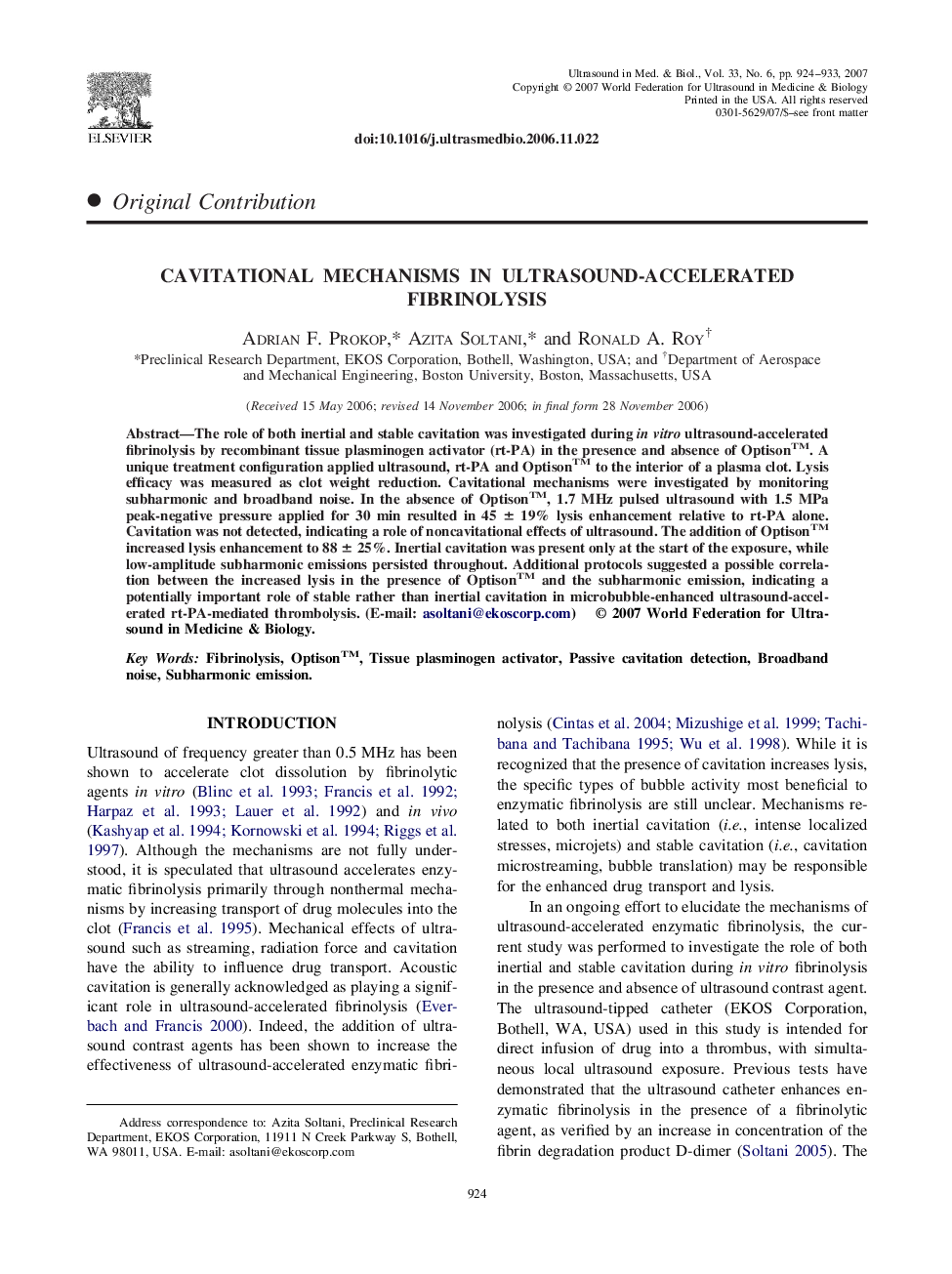| Article ID | Journal | Published Year | Pages | File Type |
|---|---|---|---|---|
| 1762970 | Ultrasound in Medicine & Biology | 2007 | 10 Pages |
Abstract
The role of both inertial and stable cavitation was investigated during in vitro ultrasound-accelerated fibrinolysis by recombinant tissue plasminogen activator (rt-PA) in the presence and absence of Optisonâ¢. A unique treatment configuration applied ultrasound, rt-PA and Optison⢠to the interior of a plasma clot. Lysis efficacy was measured as clot weight reduction. Cavitational mechanisms were investigated by monitoring subharmonic and broadband noise. In the absence of Optisonâ¢, 1.7 MHz pulsed ultrasound with 1.5 MPa peak-negative pressure applied for 30 min resulted in 45 ± 19% lysis enhancement relative to rt-PA alone. Cavitation was not detected, indicating a role of noncavitational effects of ultrasound. The addition of Optison⢠increased lysis enhancement to 88 ± 25%. Inertial cavitation was present only at the start of the exposure, while low-amplitude subharmonic emissions persisted throughout. Additional protocols suggested a possible correlation between the increased lysis in the presence of Optison⢠and the subharmonic emission, indicating a potentially important role of stable rather than inertial cavitation in microbubble-enhanced ultrasound-accelerated rt-PA-mediated thrombolysis. (E-mail: asoltani@ekoscorp.com)
Keywords
Related Topics
Physical Sciences and Engineering
Physics and Astronomy
Acoustics and Ultrasonics
Authors
Adrian F. Prokop, Azita Soltani, Ronald A. Roy,
